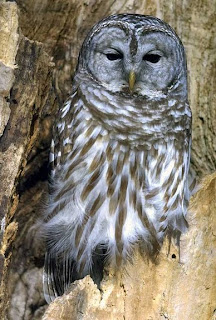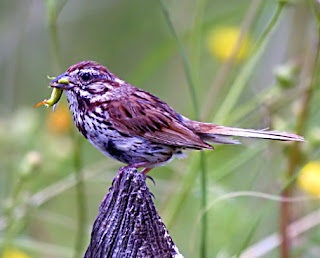Introduction
This ornithology course originated from lecture notes that I developed over the years. I have retired from teaching and see little reason to have this resouce, such as it is, gather dust in some drawer. In this blog format, I offer it to you as a free, non-credit, self-study exercise. As such, you many expect little or no interaction from me (although I will be glad to hear about possible editorial improvements).
This blog is not intended as an all-inclusive course. For example, I also taught courses in Ecology and Evolution, so many fundamental aspects of those courses are not found here. It would be wise, then, to have a General Biology textbook, in case something is not fully explained here. I expected students taking this course to purchase an ornithology textbook. Later, students bought Thayer's CD-ROM disk, Birds of North America, that has a brief textbook embedded within it. Either way, you can go into various subjects in more depth or check out areas that may be neglected here. Students should also make extensive use of Google or other search engines. Clicking on many words in this blog will lead directly to Google, whence students can retype the term and see where Google takes you. Just don't forget to return to the course!
During a "normal" Ornithology course, students would have an extensive laboratory experience. I emphasize heavily field identification. Students should buy any field guide and spend up to four hours per week trying to identify birds. Field work is the skill that many students will use throughout their lives and makes an Ornithology course especially valuable. (What is a "normal" Ornithology course? I suspect that each ornithologist would come up with a different course, depending upon the interest of the scientist! This situation is certainly the case with this course.)
I received my Ph.D. from Louisiana State University. While there I took Ornithology courses from Dr. George H. Lowery, Jr., and Dr. James Van Remsen. In many ways, this course evolved from those graduate courses. This course is dedicated to my wife, Erika, without whose assistance and support, I would not have enjoyed a successful ornithological career.
This blog is not intended as an all-inclusive course. For example, I also taught courses in Ecology and Evolution, so many fundamental aspects of those courses are not found here. It would be wise, then, to have a General Biology textbook, in case something is not fully explained here. I expected students taking this course to purchase an ornithology textbook. Later, students bought Thayer's CD-ROM disk, Birds of North America, that has a brief textbook embedded within it. Either way, you can go into various subjects in more depth or check out areas that may be neglected here. Students should also make extensive use of Google or other search engines. Clicking on many words in this blog will lead directly to Google, whence students can retype the term and see where Google takes you. Just don't forget to return to the course!
During a "normal" Ornithology course, students would have an extensive laboratory experience. I emphasize heavily field identification. Students should buy any field guide and spend up to four hours per week trying to identify birds. Field work is the skill that many students will use throughout their lives and makes an Ornithology course especially valuable. (What is a "normal" Ornithology course? I suspect that each ornithologist would come up with a different course, depending upon the interest of the scientist! This situation is certainly the case with this course.)
I received my Ph.D. from Louisiana State University. While there I took Ornithology courses from Dr. George H. Lowery, Jr., and Dr. James Van Remsen. In many ways, this course evolved from those graduate courses. This course is dedicated to my wife, Erika, without whose assistance and support, I would not have enjoyed a successful ornithological career.
Common Loon




Thank you sir for sharing this with us!
ReplyDeleteThank you very much Professor Tallman. I am very excited to embark on your course.
ReplyDeleteThank you Dr. Tallman. I can hardly wait to begin the course.
ReplyDeleteI have been looking for an ornithology course, and I am excited to begin reading your blog. I just ordered an ornithology textbook as well as a birding journal. I am looking forward to this!
ReplyDeleteWelcome to the course. If you come across any questions, I will be glad to help answer them.
DeleteThis is a wonderful blog: truly generous and amazing. Thank you for sharing your wisdom, Prof. Tallman.
ReplyDeleteI echo the other comments. What a gift and I will donate!
ReplyDeleteThanks for the compliment. When I retired I thought it would be a shame just to throw the course in a drawer. (Donations are always welcome.)
Delete